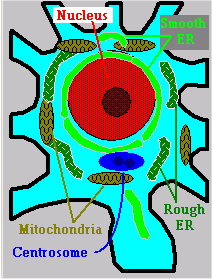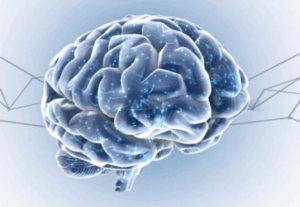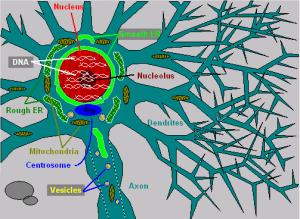15 Sep What is Inside Neurons?
Intracellular Structure of Neurons
 In earlier posts, we examined the brain, its areas, and the types of neurons that populate the different layers of some of the brain’s areas. In this post and more to follow, we will turn up the magnification and look a little deeper. What can be seen inside the cells? What is it that enables them to perform the functions that are most interesting to students of cybernetics? The framework for this examination is, once again, an attempt to model cognitive functions with an electronic/mechanical paradigm.
In earlier posts, we examined the brain, its areas, and the types of neurons that populate the different layers of some of the brain’s areas. In this post and more to follow, we will turn up the magnification and look a little deeper. What can be seen inside the cells? What is it that enables them to perform the functions that are most interesting to students of cybernetics? The framework for this examination is, once again, an attempt to model cognitive functions with an electronic/mechanical paradigm.
Neurons are essential components of thought. But how do they do what they do? Unfortunately, we do not know all the answers. We can, however, look at what scientists know and what they suspect. Perhaps we can even base a set of modeling assumptions on the sound foundation of scientific evidence of what’s inside neurons.
Some schools of thought suggest that it is not the neuron but the network that is the most critical mechanism of thought. The description of the structure and functions of the human neural network will be taken up in posts in the 3rd section of this blog. First, however, we need to know more about neurons.
| Understanding Context Cross-Reference |
|---|
| Click on these Links to other posts and glossary/bibliography references |
|
|
|
| Prior Post | Next Post |
| Quest for The Knowledge Enterprise | Context is King Indeed |
| Definitions | References |
| neuron | Alberts 1989 |
| network | Curtis 1990 |
| organelle | Carpenter 1978 |
| soma | Pansky 1988 |

In the nervous system there are 100 to 200 billion nerve cells or neurons, most of which are in the brain. Their intracellular structure (the things inside neurons and the way they are organized) is as interesting as their intercellular structure, yet many artificial neural networks acknowledge the latter while ignoring the former. The rationale for neglecting the intracellular structure of neurons is twofold. First, if the guts do not impact cybernetic functions of neurons, who cares what’s inside? Second, if connectionist equations capture all the cybernetic functionality of all neurons, then the internal structure is only worth looking at to support that formula.
But what if intraneural structure suggests diverse functions that may have an impact on cognition? Surely the time has come to take a good long look from the inside out. I will focus on a few intracellular components that are particularly interesting in the context of cybernetic modeling and proposes some possible interpretations. These are NOT the only important things to look at, but a closer study of intracellular components does expose fascinating information that can expand our perspective.
In cybernetic models we sometimes compare nodes or neurodes (circles) to neurons. Now we’ll explore the circles, later the links.
Neuron axons and dendrites have properties that could alter the way electrical potential is processed by the cell. The ten-million-dollar question is this:
“Do neurons themselves have complex internal circuitry, or are these tiny cells like single registers in the circuitry of the whole brain?”
 Neuron Organelles
Neuron Organelles
The most important part of this inside analysis concerns axons and dendrites, sometimes considered neuron organelles. I am preparing a couple more posts to deal primarily with the cytoskeleton and how it supports networking functions and network components.
First, however, we will engage in a brief discussion of the organelles that support the functions of the neuron. Major organelles are found in the body or soma of the cell, just as major organs are found in the main part of the body rather than the appendages (arms and legs, fingers and toes). The organelles discussed in the first part are the nucleus, mitochondria, and endoplasmic reticulum. We will also focus on the other components identified in the illustration on this page, including the ribosomes that appear as dots on rough ER.
Throughout these posts on cell components you will find links to words in the glossary and references in the bibliography. The glossary sheds a little more light on each subject or word. The texts referenced in the bibliography are what I, a computational linguist, used to explore these things and are indispensable for deeper inquiries into the natural components of understanding and context.
| Click below to look in each Understanding Context section |
|---|









